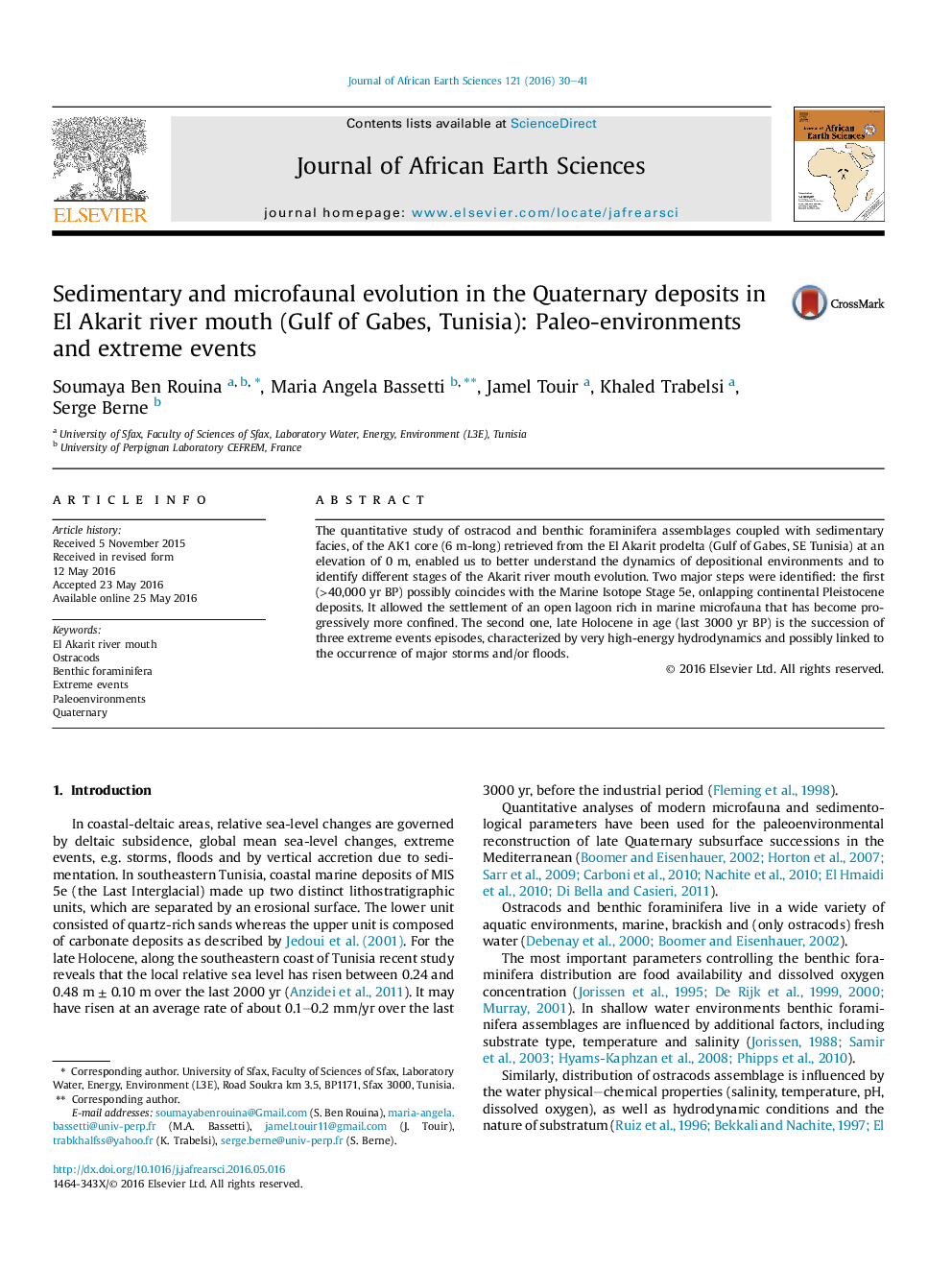| Article ID | Journal | Published Year | Pages | File Type |
|---|---|---|---|---|
| 4728236 | Journal of African Earth Sciences | 2016 | 12 Pages |
•Comprehending the paleoenvironment changes in the El Akarit river mouth during the Quaternary in relation with climate changes and extreme events.•Establish a relationship between extreme events and sedimentology context.•Found a correlation between extreme events and microfauna distribution.
The quantitative study of ostracod and benthic foraminifera assemblages coupled with sedimentary facies, of the AK1 core (6 m-long) retrieved from the El Akarit prodelta (Gulf of Gabes, SE Tunisia) at an elevation of 0 m, enabled us to better understand the dynamics of depositional environments and to identify different stages of the Akarit river mouth evolution. Two major steps were identified: the first (>40,000 yr BP) possibly coincides with the Marine Isotope Stage 5e, onlapping continental Pleistocene deposits. It allowed the settlement of an open lagoon rich in marine microfauna that has become progressively more confined. The second one, late Holocene in age (last 3000 yr BP) is the succession of three extreme events episodes, characterized by very high-energy hydrodynamics and possibly linked to the occurrence of major storms and/or floods.
